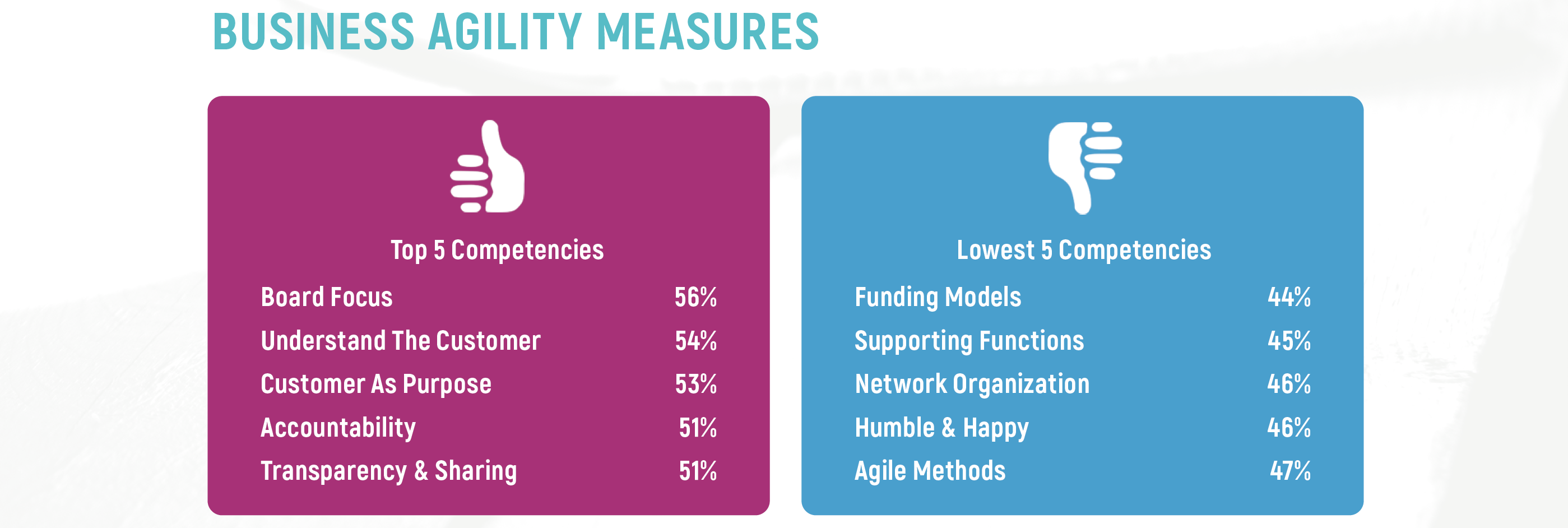Learn about purchasing for teams
5 Questions to Help You Decide if a Company’s Culture Is Agile

When considering joining a new company, remember to ask about the ways they demonstrate agility. It’ll help you assess the organization’s culture and also make your interviewers feel more confident in your understanding of an agile way of working.
Companies can display many indications of having an agile culture, both obvious and subtle. Post-it notes, whiteboards, team areas, and co-working seating are all obvious, physical signs of a company working in an agile way, but they may not tell the whole story of how agile a company is at its core. When visiting companies, I look for and ask about these 5 subtle signs to help me gauge their degree of agility.
1. Agile Companies Embrace Fast Failures
Organizations that embrace an agile mindset celebrate fast failures. Their experiments are small. They know many experiments won’t be a market blockbuster, but they call them all successful if they result in learning. These kinds of organizations encourage teams to try something new to delight customers on a regular basis while sharing what they’ve learned with the rest of the organization. The learning from any failures isn’t hidden but shared openly as encouragement/learning for other teams.
Ask this: “Tell me a few stories of team and product failures and how the organization responded?”
Source: The Business Agility Report: Special Scrum Alliance Edition
2. Agile Organizations Value Distributed Decision Making
An agile culture is only as good as its ability to make decisions and respond to rapidly changing customer needs. Organizations that are dependent upon leadership to make all decisions are doomed to be slow and sluggish. And typically, the larger the organization, the slower the response.
Truly self-organizing agile teams are empowered to make decisions day-to-day in alignment with the strategic direction. These teams have regular contact with real customers, enabling them to learn about changing customer needs and react quickly.
Ask this: “How are decisions about products made at a team level? What approvals by leadership are required and why?”
3. Agile Cultures Create Joy in the Workplace
People who are truly empowered to create value directly for customers and to work at a sustainable pace, love the way they work. You can hear it when walking on the floor of an organization with teams that really are deeply connected to the impact their product has on their customers. Individuals within agile organizations embrace Dan Pink’s “Autonomy, Mastery, and Purpose”, and connect to the organizational mission, vision, and values.
Ask this: What is your company’s mission, vision, and values? What team communications are around getting to know each other as humans and not simply by work?”
Source: The Business Agility Report: Special Scrum Alliance Edition
4. Agile Teams Release Product Frequently
At its core, agility is measured by frequent releases of customer-facing value–or potential value. The more frequently you release products, the more opportunities you have to delight a customer and receive feedback. Frequent releases allow an organization to sense and respond to changing customer needs, and deliver the right product at the right time.
Ask this: “Are your teams releasing working software/products to your customers each sprint? If not, how often and why?”
 Source: The Business Agility Report: Special Scrum Alliance Edition
Source: The Business Agility Report: Special Scrum Alliance Edition
5. Agile Organizations Inspect and Adapt through Retrospectives
On truly agile teams, all members have a voice in how the work is organized. Team retrospectives have actionable results that the team builds into the next sprint. When retrospectives are done correctly, teams try something new each sprint in order to work in a better way.
Retrospectives are valuable at an organization-level as well. Truly agile cultures inspect and adapt how they are organized. However, these organizations aren’t just doing retrospective theater. They listen to team feedback and make real, actionable changes to improve team members’ experience and maximize business outcomes.
Ask this: “What experiments are your teams trying this sprint to improve how they work together? How has your organizational design changed based on employee feedback?”
Looking for resources and connections to get started? Visit this collection of Agile Career Resources and join a user group to start finding connections in your local area.
Related Article
Article - 5 Ways to Assess a Company for DEI Before you Apply













